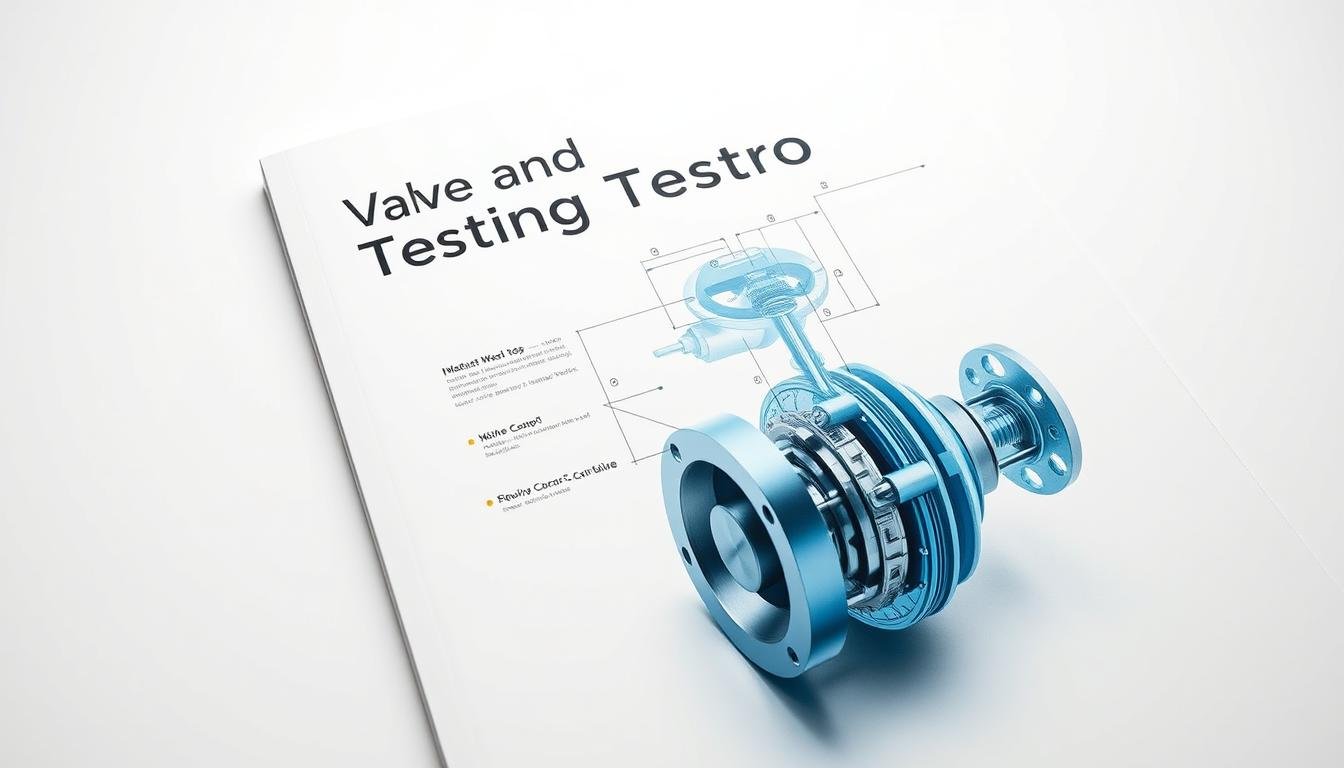Valves are key parts that control the flow of fluids in many systems. They affect how well these systems work. In my PDF, I explore how valves function and why testing them is so important.
This guide covers different types of valves, where they’re used, and how to test them. It also talks about the rules for testing valves. It’s for anyone who wants to learn more about valves and how to test them right.
What is a Valve?
A valve is a key device that controls the flow of liquids, gases, or slurries in systems. It comes in many designs, each for different needs. For example, ball, gate, globe, check, and butterfly valves are common types.
Each valve has its own use and how it works. Knowing this is important for choosing the right valve for a job.
Looking into how valves work, we see they manage flow and pressure. They have parts like the body, bonnet, and actuator. These parts affect how well a valve works.
Knowing about these parts helps pick the right valve. The American National Standards Institute (ANSI) has guides on valve types and their uses.
Importance of Valve Testing:
Valve testing is key in industries like oil and gas, manufacturing, and water management. It’s a critical process that offers many benefits. Regular testing helps prevent failures that could harm the environment and cause expensive downtime.
Testing valves thoroughly helps find leaks, malfunctions, and wear before they become big problems. This approach is vital for keeping valves reliable, ensuring safety and efficiency. Following standards like those from the International Organization for Standardization (ISO) is also important.
Valve and Testing PDF Document Overview:
The Overview of valve testing PDF gives a detailed look at valve documentation. It covers different types of valves, testing methods, and how to follow industry standards. It also talks about troubleshooting techniques.
This PDF is easy to use, thanks to its layout and graphics. It includes diagrams and examples to help you learn better. It’s a great resource for anyone wanting to improve their valve testing skills.
Standards and Regulations in Valve Testing:
Knowing the valve testing standards is key for reliable and safe use. Groups like the American Society of Mechanical Engineers (ASME) and the American Petroleum Institute (API) are vital. They create rules and guidelines for testing valves.
Following these standards improves product quality and reduces failure risks. Ignoring these rules can cause big problems. It can lead to legal issues and safety risks, affecting work and safety.
Tools and Equipment for Valve Testing:
Effective valve testing relies on the right tools and equipment. Over the years, I’ve used various tools to ensure accuracy and efficiency. Pressure gauges help me monitor pressure levels in the valve system.
Flow meters give me data on fluid movement, helping to spot issues. Testing devices like ultrasonic leak detectors and hydraulic test pumps are also key. They let me check valve integrity and performance under different conditions.
Keeping these devices calibrated and maintained is essential. It ensures reliable results over time. I always stress to my colleagues that keeping equipment in good shape is critical.
Choosing high-quality brands like Fluke for pressure gauges or Badger Meter for flow meters boosts testing capabilities. Using top-notch equipment helps me give more accurate assessments and advice. The right tools are essential for efficient valve testing.
Common Challenges in Valve Testing:
When I test valves, I face several challenges. One big problem is getting to the valves. They’re often in hard-to-reach spots, making it tough to inspect and test them. Without good planning, we might miss important details.
Environmental factors also cause issues. Things like changing temperatures, humidity, and corrosive substances can affect our results. We need to think carefully about our equipment and testing methods.
Time is another challenge. We often have to work fast, which can lead to missing important details. It’s important to balance speed with thoroughness.
To overcome these challenges, I believe in using new testing technologies. These tools can make our work more efficient and accurate. Also, training our team well helps them handle the unique problems we face.
Ignoring proper testing can lead to big problems. It can cause safety issues and break rules. By tackling these challenges head-on and focusing on safety and detail, we can make valve testing more effective.
Resources for Further Learning:
If you want to learn more about valve testing, there are many resources available. Check out industry publications like the Journal of Pressure Vessel Technology and Valve World. They have articles and case studies on the latest methods and tech.
Online courses and webinars are great for learning at your own speed. Sites like Coursera and Udemy have courses on valve maintenance and testing. They’re perfect for those looking to grow professionally. Also, technical workshops offer hands-on experience with valve testing, making the knowledge more practical.
Joining groups like the Valve Manufacturers Association or the American Society of Mechanical Engineers is also beneficial. Being part of forums and discussion groups can lead to valuable exchanges with others in the field. It helps me stay updated on new trends and best practices.
